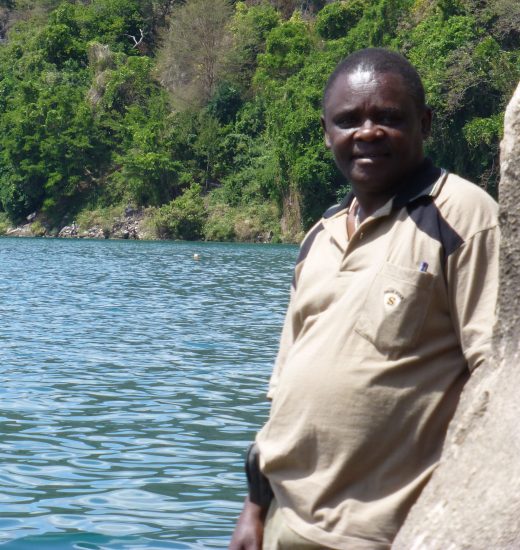An international collaboration of 356 scientists in which Sokoine University of Agriculture (SUA) is a collaborator has found almost identical patterns of tree diversity across tropical forests of the world. A study of more than one million trees across 1,568 tropical locations worldwide, published in Nature, observed that 2.2% of tree species make up 50% of the total number of trees in tropical forests across Africa, the Amazon (South America), and Southeast Asia, with each continent consisting of the same proportion of a few common species and many rare species.
It is fact that the tropical forests are very famous for their diversity, but this is the first-time scientists have studied the commonest trees in the world’s tropical forests, an analysis that estimate that only 1,053 tree species account for half of the global 800 billion tropical forest trees, with extreme number of rare species and the rarest 39,500 species accounting for just 10% of trees.
Among the Senior Authors of this publication; Professor Pantaleo Munishi from Sokoine University of Agriculture (SUA) Department of Ecosystems and Conservation stated: “This is pioneering research in the study of patterns in tropical tree diversity which has implications on the conservation of tropical trees across the globe”.
He further said: ‘This study will be instrumental to designing conservation strategies that are common across the three continents with due consideration of rare species of conservation concern”.
He continued: ‘This will also enhance our understanding of the dynamics of tropical forests under current and future environmental change and the potential of the forests to mitigate climate change through carbon capture’ adding on the value of the forests in climate change mitigation and adaptation
The Lead author Dr Declan Cooper (UCL Geography and UCL Centre for Biodiversity and Environment Research) said: “Our findings have profound implications for understanding tropical forests and focusing on understanding the commonest tree species, we can probably predict how the whole forest will respond to today’s rapid environmental changes. This is especially important because tropical forests contain a tremendous amount of stored carbon, and are a globally important carbon sink.”
He continued: “Identifying and tracking these common species may provide a new way to of looking at tropical forests, characterising them in the future, possibly gauging forest’s health more easily.”
A senior author, Professor Simon Lewis (UCL Geography and University of Leeds) said: “We wanted to look at tropical forests in a new way, focusing on a few hundred common tree species on each continent, rather than the many thousands of species that we know almost nothing about, can open new ways to understand these precious forests. This focus on the commonest species should not take away from the importance of rare species. Rare species need special attention to protect them, but quick and important gains in knowledge might come from a scientific focus on the commonest tree species.”
The researchers found strikingly similar patterns in the proportion of tree species that are common, at about 2.2%, despite the tropical forests of the three continents having a unique history and differing contemporary environments.
The Amazon consists of a large region of connected forest, while Southeast Asia is a region of mostly disconnected islands. People only arrived in the Amazon around 20,000 years ago, but people have been interacting with the forests in African and Southeast Asian for relatively longer time, more than twice the length of time they have been interacting with the Amazon forests. In terms of the contemporary environment, African forests experience a drier and cooler climate than the other two tropical forest regions.
Given these striking differences, the near-identical patterns of tree diversity suggests that a fundamental mechanism may govern the assembly of tree communities across all the world’s tropical forests. The researchers are not yet able to say what that mechanism might be, and it will be the focus of future work on identifying that mechanism.
The estimates of common species derive from statistical analyses, which does not provide the names of the common trees. To overcome this, the scientists used a technique known as resampling to estimate which are the most likely names of the common species. Their list of 1,119 tree species names, the first list of common species of the world’s tropical forests, will allow researchers to focus their efforts on understanding the ecology of these species, which in turn can give scientists a short-cut to understand the whole forest in all tropical environments.
The researchers assembled forest inventory data from intact tropical forests where in each of 1,568 locations, teams identified and recorded every tree with a trunk greater than 10 centimetres in diameter, in a patch of forest, usually one hectare (100m x 100m). These data have been collected and collated for over 20 years and forms a collaboration of the largest plot networks across the Amazon (Amazon Tree Diversity Network; RAINFOR), Africa (African Tropical Rainforest Observatory Network, AfriTRON; Central African Plot Network), and Southeast Asia (Slik Diversity Network; T-FORCES), brought together for the first time for the published analysis.
This collaboration across hundreds of researchers, field assistants, and local communities resulted in a total of 1,003,805 trees sampled, which included 8,493 tree species, across 2,048 hectares, equivalent to almost 20 square kilometres of forest. This research was supported by the Natural Environmental Research Council of the UK

